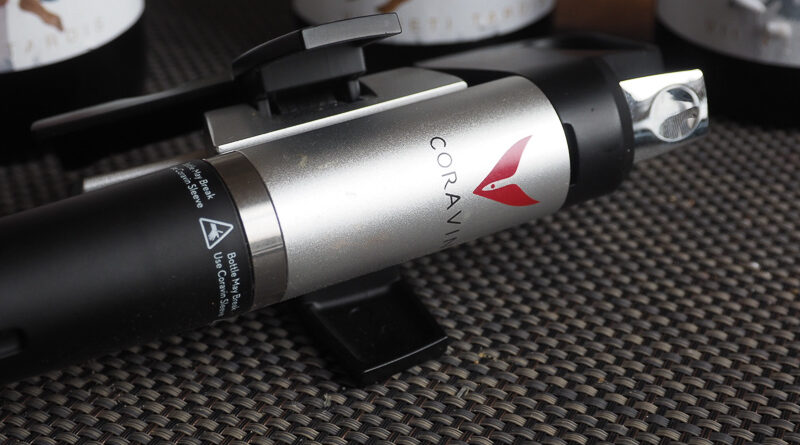Should wine critics be declaring ratings from samples taken with Coravin, or from small bottles?
I think wine critics should indicate when the sample they have tasted has been Coravined. As a producer, if I sent a sample bottle for tasting, I would expect it to be assessed by opening and pouring.
On social media I’ve seen a few wine critics posting pictures of themselves at work. Nothing unusual about seeing a critic tasting away in front of a line-up of bottles. But what has surprised me is that they are taking samples from the wines by Coravin.
Coravin, the wine preservation system that extracts wine through a medical needle without opening the bottle, through injecting argon in at the same time, is one of the wine world’s great innovations. I’ve tasted many Coravined bottles, and had some good experiences, as well as some bad ones. But more of the former.
It makes it possible to sell expensive wines by the glass in restaurants. It allows wine reps to give lots of customers tastes of the same wine, which would have otherwise been prohibitively expensive.
But when there is no need to use it, it is better not to. How can a fizzing, bubbling sample of wine that has been squirted through a fine needle, be exactly the same as a sample that is poured from an opened bottle? In every case? I think it certainly gives you a good idea about the wine, but it’s another potential obstacle in the way of a correct assessment of the bottle.
Also, for screwcapped wine, to use a Coravin requires that the wine is opened and a new Coravin-friendly cap applied, which is a process that introduces some air. Not so much a problem if the wine is to be assessed immediately, but potentially problematic if there is a delay.
Why do critics need to Coravin samples? Surely the objective of their tasting is to get as close to the truth of the wine is possible. The wineries have sent in the wines to be tasted. There are already enough problematic aspects to large tastings of wines in an office environment, without adding a further veil. If I was a winery who had submitted a wine and found out the critic was Coravining it, I’d be unhappy.
I think if an assessment of a wine is made from a Coravined sample, this should be declared in some way. It doesn’t mean it’s a bad assessment; just that it is what it is.
Then we have the phenomenon of small bottles (or other containers such as pouches or tubes) into which a wine has been decanted. Since Covid and the restriction of travel, I’ve done a number of tastings with these small samples, and it’s a great idea. But how do we know that they represent the ‘true taste’ of the wine? If there is oxygen pick-up during the filling process, then the wine will change – some wines are more susceptible to this.
It’s very hard to decant wine from a full bottle into small ones without compromising the wine. Argon, the inert gas, is commonly used to prevent oxygen pick up. But many don’t realize the idea that argon doesn’t act as a ‘blanket’ – yes, it is heavier than air, but the gases in air – mainly nitrogen and oxygen – will diffuse into the layer of argon along a concentration gradient, and before long you will end up with a mixture of argon, nitrogen and oxygen.
I think it’s only fair to readers to declare if notes have been taken from smaller bottles – this is something that I am going to do from now onwards.
Sometimes a Coravined sample, or a small bottle sample, is the best a critic can do. But where there’s an active choice on the part of the critic to use a Coravin in order to save the rest of the wine for later, I’m actually quite surprised. Critics are charging readers for their ratings, and they should make every effort for them to be as good and accurate as they can be.




